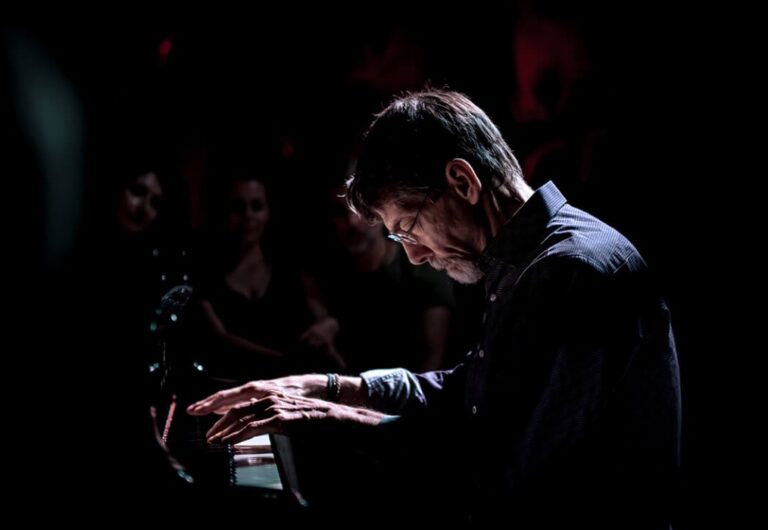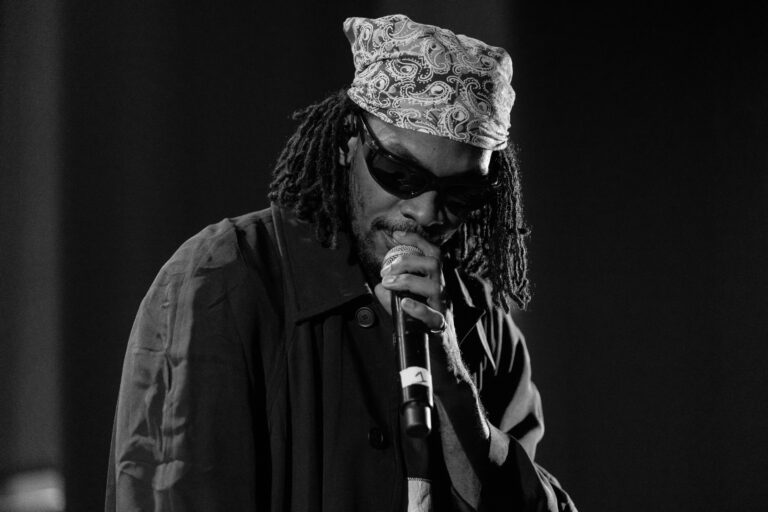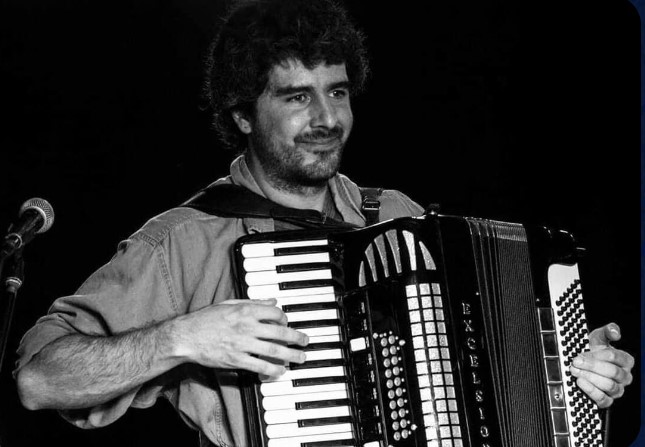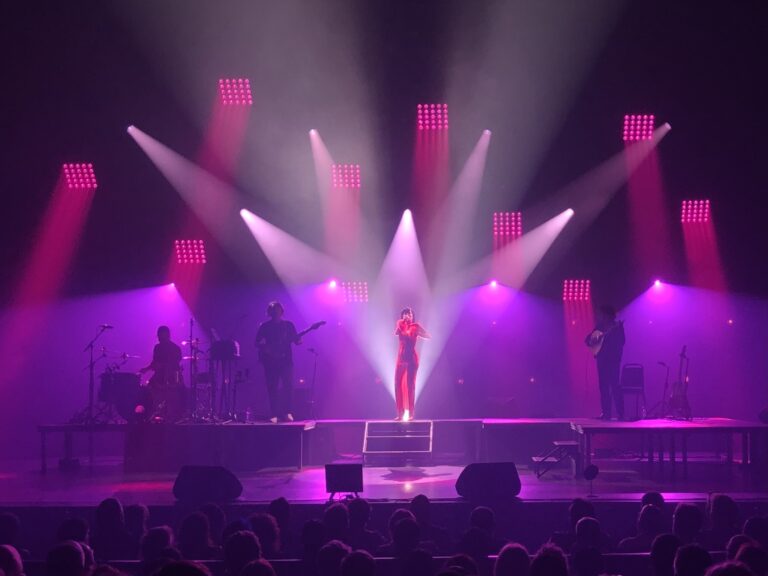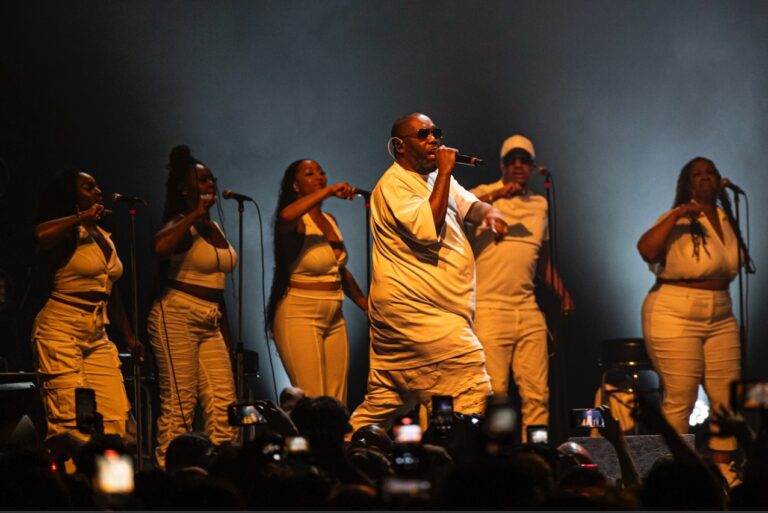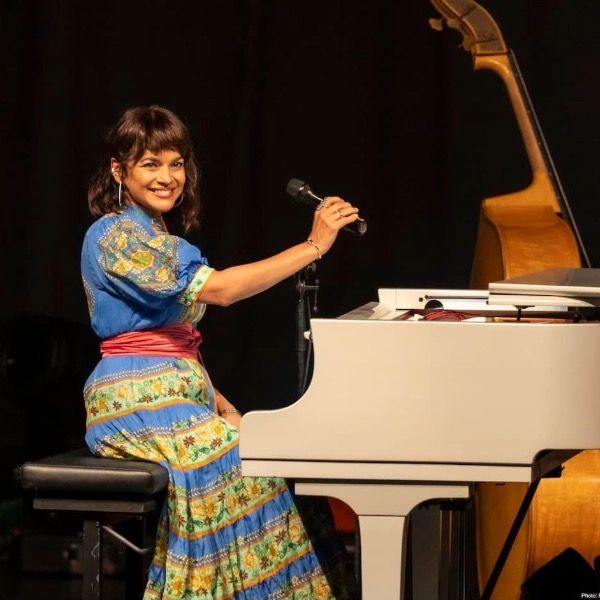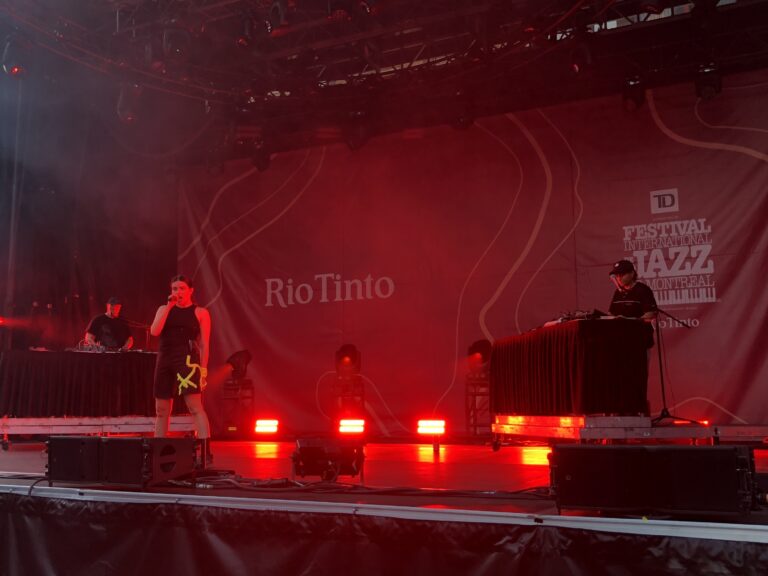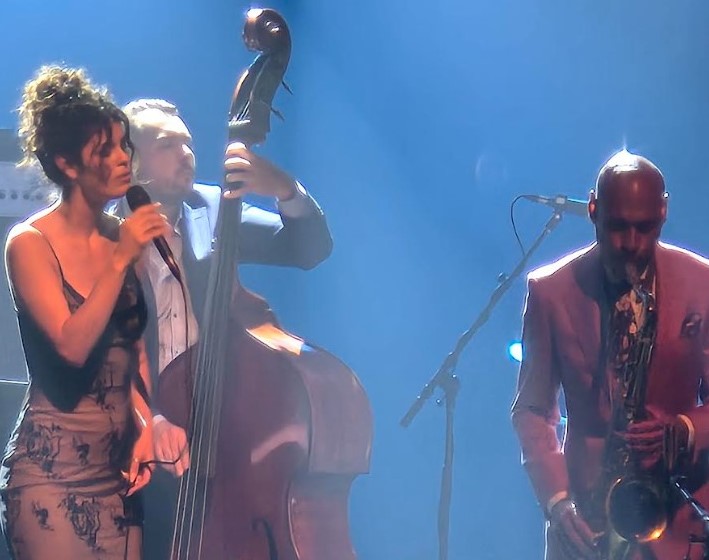Under the guidance of visionary drummer and composer Makaya McCraven, a Chicago musician of whom I’ve been a thurifer for some years now, we were treated on Friday to rereadings of his recent material, especially the material from the album In These Times, released the fall following his FIJM residency in July 2022. Fewer surprises, less astonishment, less excitement, but just as much quality and brilliance in the playing. Just as much competence in the personnel put forward.
One can only imagine the delight of jazzophiles at their first encounter with this music played in real time! Théâtre Jean Duceppe was about 90% full, for a performance lasting about an hour and a half.
There was Joel Ross, obviously a vibraphone virtuoso, who had the opportunity to show off his two-mallet skills. Marquis Hill, trumpet, fulfilled all the tasks requested by his employer, with whom he has been working for some time; the exposition of the themes was perfect, the solos circumspect, without any major sparkle.
Junius Paul, electric bass, is another loyal Makaya McCraven collaborator, and the main support for the extraordinary rhythmic figures generated by the drums. The bassist also knows how to sing, and will also express himself through his voice in Makaya McCraven’s excellent mashup of his music with that of the late Gil Scott Heron’s album I’m New Here, including audio extracts from the late poet, and also a chorus sung by Junius Paul.
As for harpist Brandee Younger, we’ve heard her in this environment before (both on record and on stage), and she also has a solo career. She was in MTL in July 2023, and her concert at Studio TD was a great success. On the Makaya side, the harpist is at one with the ensemble, both as a gifted soloist and as a generator of harmony. The aura of legendary harpist Alice Coltrane is not far away. Once again, the depth of the drummer, certainly one of the most innovative of the current period, was evident.
We can’t wait for Makaya McCraven’s next chapter, but there’s still time to enjoy what he’s put forward so far. Prior to the release of In These Times, the percussionist had been creating pieces inspired by electronic processes and repurposing them as instrumental music. On Friday evening, this impression was less strong, as was the case when listening to his latest album.
Why is that? The composer’s most recent work incorporates aesthetic codes much closer to modern jazz and jazz groove. The rhythmic foundations remain visionary, the melodic and harmonic approaches more conservative, and that’s probably why it works so well with music lovers. For the future, in any case, let’s be sure that Makaya McCraven will be a headliner in the territory he’s combing. Let’s rejoice: very few artists of such depth can claim such a status.

